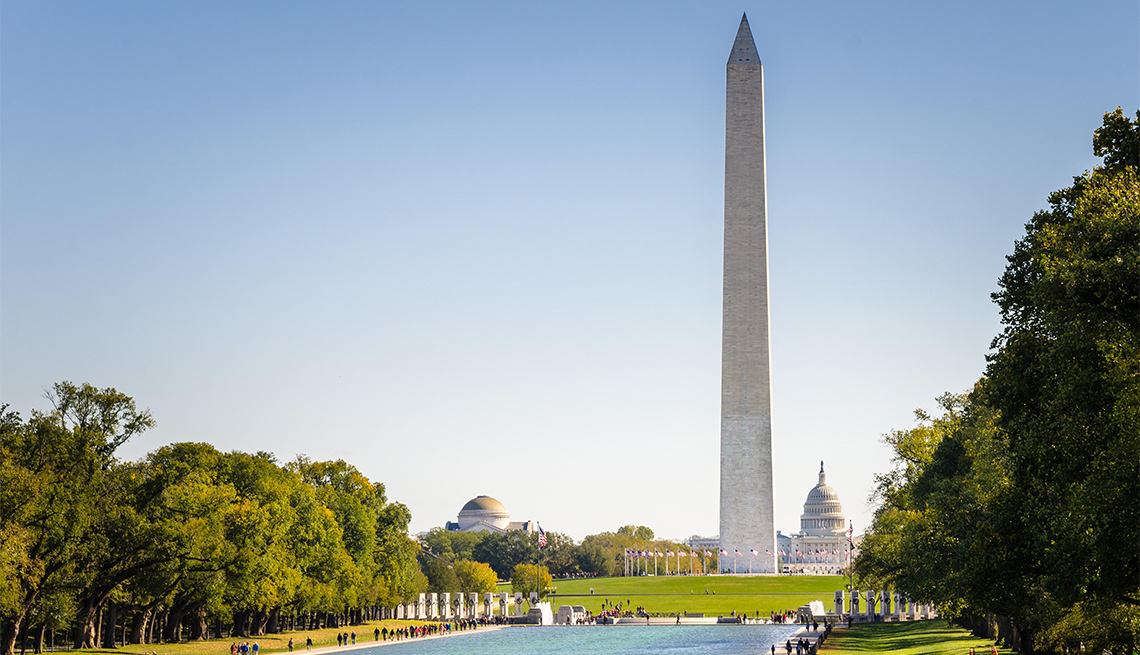Staying Fit
When to go
In D.C., heat waves and cool spells descend year-round, with 90-degree temperatures and smothering humidity typical in July and August, and 30s to 40s in winter. Spring break crowds appear along with the city’s famous cherry blossoms in March and April, and it just grows busier until August, when the sweltering weather clears out the city. Some big protests can impede your movement downtown, as will a few annual rallies, such as the Rolling Thunder veterans-on-motorcycles gathering on Memorial Day weekend. Late spring and fall often bring ideal weather, although with high pollen counts in spring.


AARP Membership— $12 for your first year when you sign up for Automatic Renewal
Get instant access to members-only products and hundreds of discounts, a free second membership, and a subscription to AARP the Magazine.
Ways to save: Visit in winter, when flights and hotels are cheapest and the city is festooned in lights and holiday trimmings (December). Restaurants offer affordable prix-fixe menus during January’s Metropolitan Washington Restaurant Week.
Where to stay
When looking for accommodations in the city, consider the neighborhood and access to a Metro subway station: Downtown, Dupont Circle, Penn Quarter and Foggy Bottom are all within easy reach of tourist attractions. There are plenty of choices in each, from high-end to affordable.
Pricier hotels rich with history include the renovated Watergate Hotel (site of the infamous political scandal), Mayflower Hotel (a favorite lunch spot of FBI director J. Edgar Hoover) and the Willard (where President Abraham Lincoln stayed before his inauguration).
But there are plenty of other options, including all the usual chain hotels. Rates at the Comfort Inn Downtown DC/Convention Center include continental breakfast and start around $150 during the off-season. The budget staple Hotel Harrington, just steps from Ford’s Theatre and the Mall museums, charges less than $120, sometimes even during the springtime high season. Rates plummet the farther outside the city you stay. You could seek out hotels near the Metro in Maryland (Silver Spring, Greenbelt) or Virginia (Alexandria and Arlington). In Arlington, rates at the Red Lion Arlington Iwo Jima start at about $100 and include a fitness center and free parking. Guests 55 and older get 10 percent off the best available rate. In Silver Spring, Travelodge by Wyndham Silver Spring can cost less than $75, double, including Metro access and free parking.
More ways to save: Most hotels are cheaper on weekends, when business travelers have departed, and during the off-season (August and winter). Check sites such as Booking.com for deals. Check out rentals from Vrbo and Airbnb, where a studio or one-bedroom apartment can cost less than $100 a night.

































































